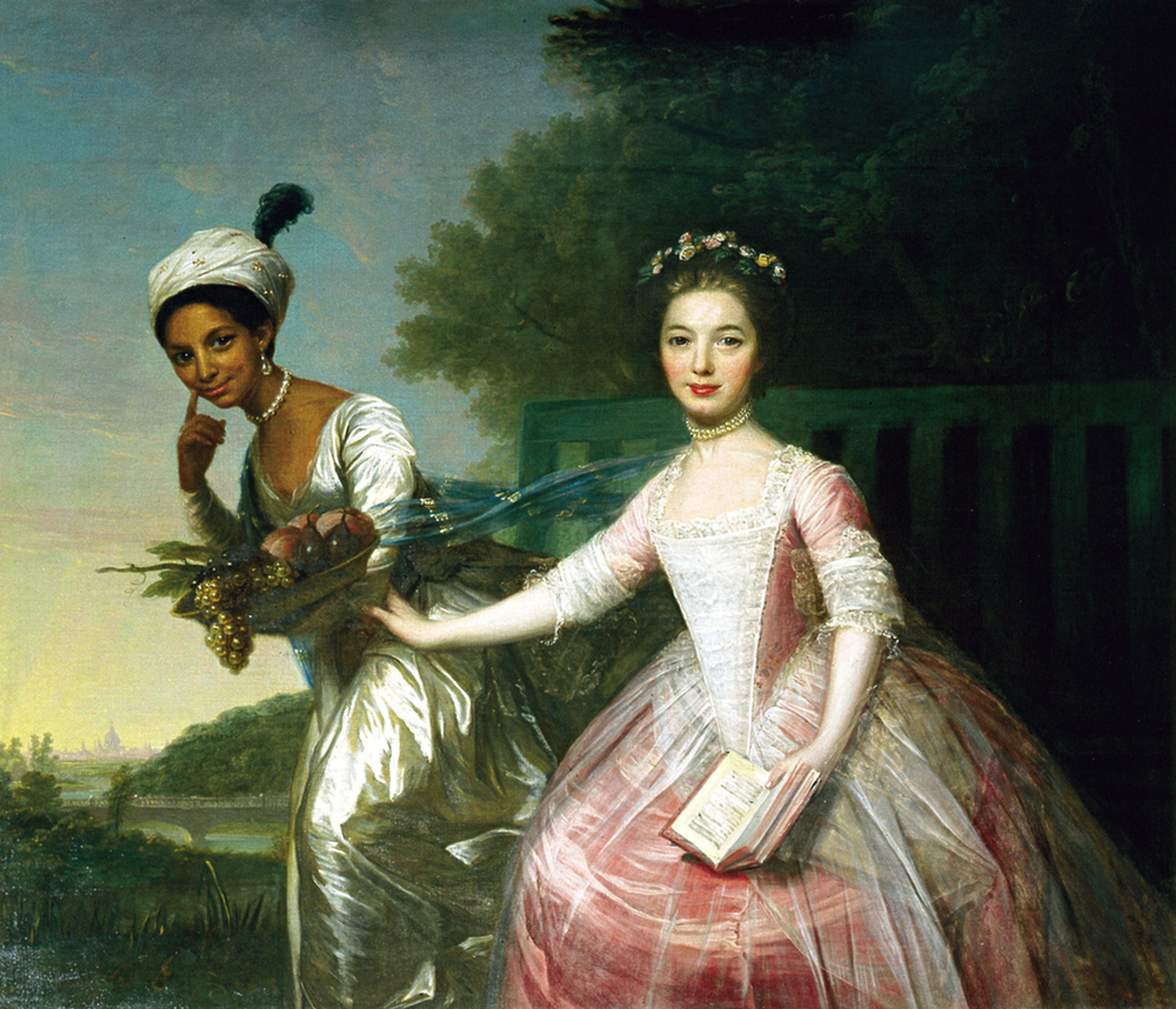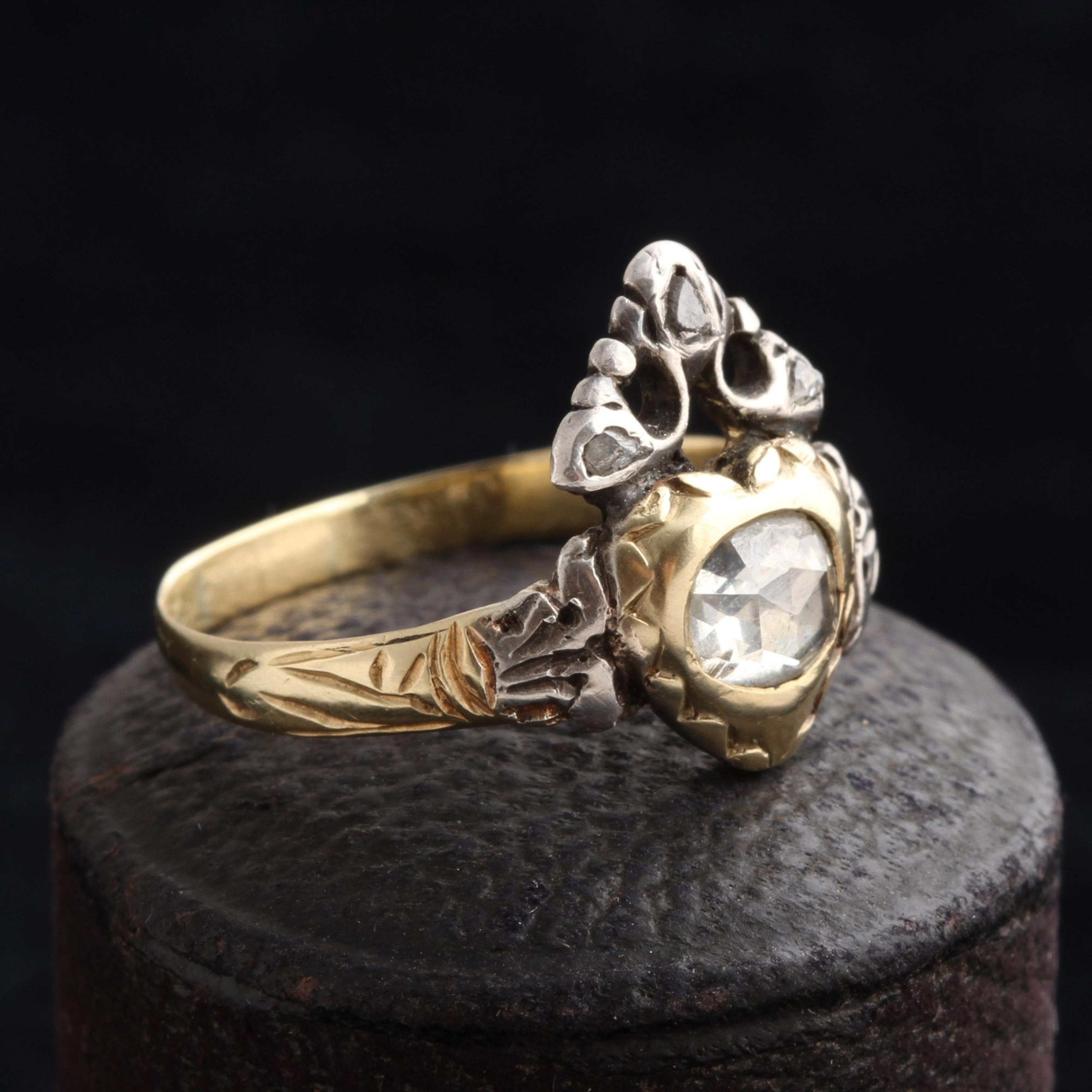The Georgian period encompasses the reigns of the four King Georges from 1714 to 1830. During this time, the aristocracy made it a point to flaunt their wealth by making sure they were absolutely dripping with jewels at all times. Although engagement rings were uncommon - they weren't frequently given until the Victorian era - the exception to this rule was the crowned heart ring. These rare pieces would be given to one's betrothed as a token of love and devotion.This c. 1780 crowned heart ring is fashioned in silver and gold with a large central rose cut diamond and three tiny diamond chips set within the crown.
thedetails
- Materials
22k gold (tests), silver, 5.2mm x 4.3mm center rose cut diamond, 3 small diamond chips in the crown
- Age
c. 1780
- Condition
Very good - some minor surface wear commensurate with age and use
- Size
6.75; 1.37cm head, 2mm shank
Need more photos?
Send us an email to request photos of this piece on a model.

Aboutthe
GeorgianEra
1714 — 1837
As imperialist war raged in the Americas, Caribbean, Australia, and beyond, the jewelry industry benefited: colored gems from all over the empire became newly available. A mix of artistic influences from around Europe contributed to the feminine, glittering jewels of the era. Dense, ornate Baroque motifs from Italy showed up in Georgian jewelry, as did French Rococo’s undulating flora and fauna. Neoclassical style made use of Greek and Roman motifs, which were newly popular due to the recently uncovered ruins of Pompeii and Herculaneum. Lapidary methods improved: the dome-shaped rose cut was popular, as was the “old mine cut,” a very early iteration of today’s round brilliant cut.
The boat-shaped marquise diamond cut was developed around this time, supposedly to imitate the smile of Louis XV’s mistress, the marquise de Pompadour. Paste — an imitation gemstone made from leaded glass — was newly developed in the 18th century, and set into jewelry with the same creativity and care as its more precious counterparts. Real and imitation gems were almost always set in closed-backed settings, lined on the underside with thin sheets of foil to enhance the color of the stone and highlight it's sparkle. This makes Georgian rings tough for modern women to wear, especially on an everyday basis: genteel, jewelry-owning ladies of the 18th century were not famous for working with their hands like we are. Nor did they wash their hands as much as we do. Water will virtually ruin a foiled setting, so take special care with your Georgian ring. Very little jewelry from this period is still in circulation, and it's very difficult to repair.
please note:Terms of Sale
Antiques can be returned unworn and in original condition within 10 days of delivery for an exchange or refund minus the cost of shipping. Once a piece has been altered, including ring re-sizing, it is FINAL SALE.
please note:Not suitable for everyday wear.
Foil-backed gemstones may be irreparably damaged if they come into contact with water. Remove your jewelry when washing your hands or showering. If moisture gets behind the stone, the foil could oxidize and darken. These jewels are extremely old, fragile objects and were not designed to be worn every day. Treat them as the museum-quality artifacts that they are.









